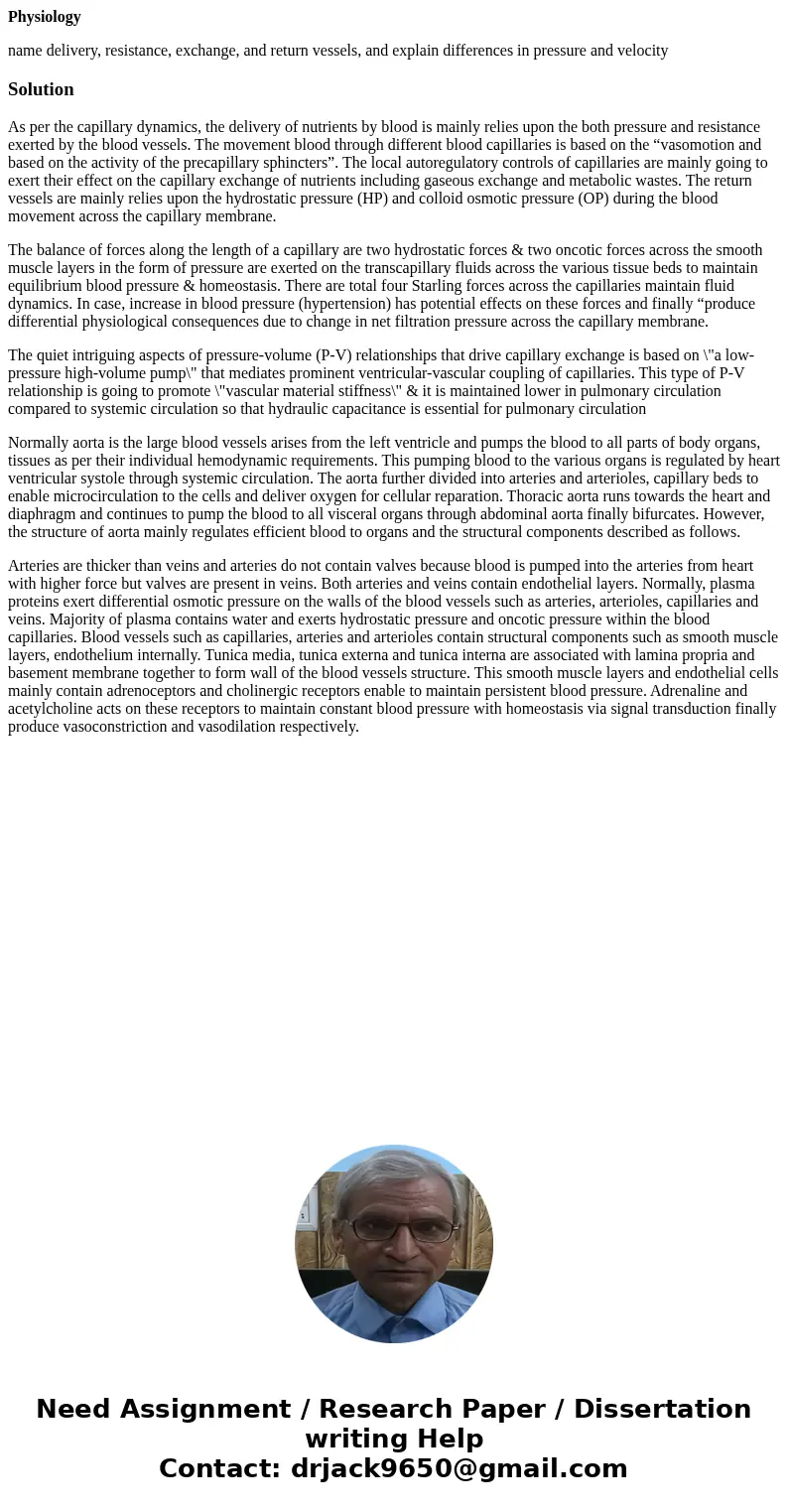Physiology name delivery resistance exchange and return vess
Physiology
name delivery, resistance, exchange, and return vessels, and explain differences in pressure and velocity
Solution
As per the capillary dynamics, the delivery of nutrients by blood is mainly relies upon the both pressure and resistance exerted by the blood vessels. The movement blood through different blood capillaries is based on the “vasomotion and based on the activity of the precapillary sphincters”. The local autoregulatory controls of capillaries are mainly going to exert their effect on the capillary exchange of nutrients including gaseous exchange and metabolic wastes. The return vessels are mainly relies upon the hydrostatic pressure (HP) and colloid osmotic pressure (OP) during the blood movement across the capillary membrane.
The balance of forces along the length of a capillary are two hydrostatic forces & two oncotic forces across the smooth muscle layers in the form of pressure are exerted on the transcapillary fluids across the various tissue beds to maintain equilibrium blood pressure & homeostasis. There are total four Starling forces across the capillaries maintain fluid dynamics. In case, increase in blood pressure (hypertension) has potential effects on these forces and finally “produce differential physiological consequences due to change in net filtration pressure across the capillary membrane.
The quiet intriguing aspects of pressure-volume (P-V) relationships that drive capillary exchange is based on \"a low-pressure high-volume pump\" that mediates prominent ventricular-vascular coupling of capillaries. This type of P-V relationship is going to promote \"vascular material stiffness\" & it is maintained lower in pulmonary circulation compared to systemic circulation so that hydraulic capacitance is essential for pulmonary circulation
Normally aorta is the large blood vessels arises from the left ventricle and pumps the blood to all parts of body organs, tissues as per their individual hemodynamic requirements. This pumping blood to the various organs is regulated by heart ventricular systole through systemic circulation. The aorta further divided into arteries and arterioles, capillary beds to enable microcirculation to the cells and deliver oxygen for cellular reparation. Thoracic aorta runs towards the heart and diaphragm and continues to pump the blood to all visceral organs through abdominal aorta finally bifurcates. However, the structure of aorta mainly regulates efficient blood to organs and the structural components described as follows.
Arteries are thicker than veins and arteries do not contain valves because blood is pumped into the arteries from heart with higher force but valves are present in veins. Both arteries and veins contain endothelial layers. Normally, plasma proteins exert differential osmotic pressure on the walls of the blood vessels such as arteries, arterioles, capillaries and veins. Majority of plasma contains water and exerts hydrostatic pressure and oncotic pressure within the blood capillaries. Blood vessels such as capillaries, arteries and arterioles contain structural components such as smooth muscle layers, endothelium internally. Tunica media, tunica externa and tunica interna are associated with lamina propria and basement membrane together to form wall of the blood vessels structure. This smooth muscle layers and endothelial cells mainly contain adrenoceptors and cholinergic receptors enable to maintain persistent blood pressure. Adrenaline and acetylcholine acts on these receptors to maintain constant blood pressure with homeostasis via signal transduction finally produce vasoconstriction and vasodilation respectively.

 Homework Sourse
Homework Sourse